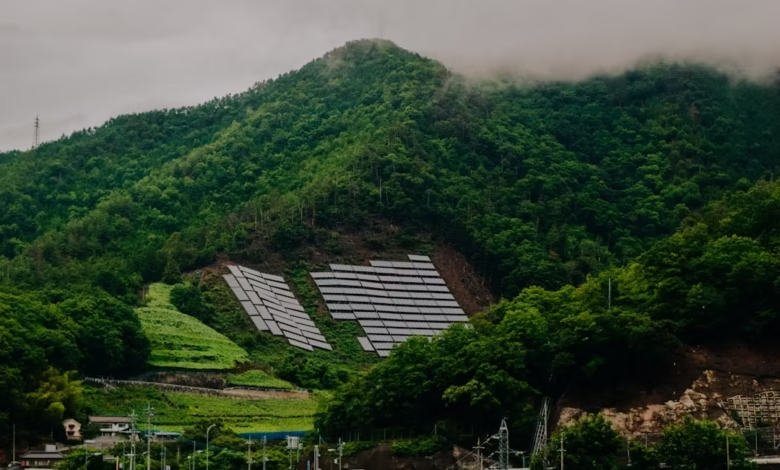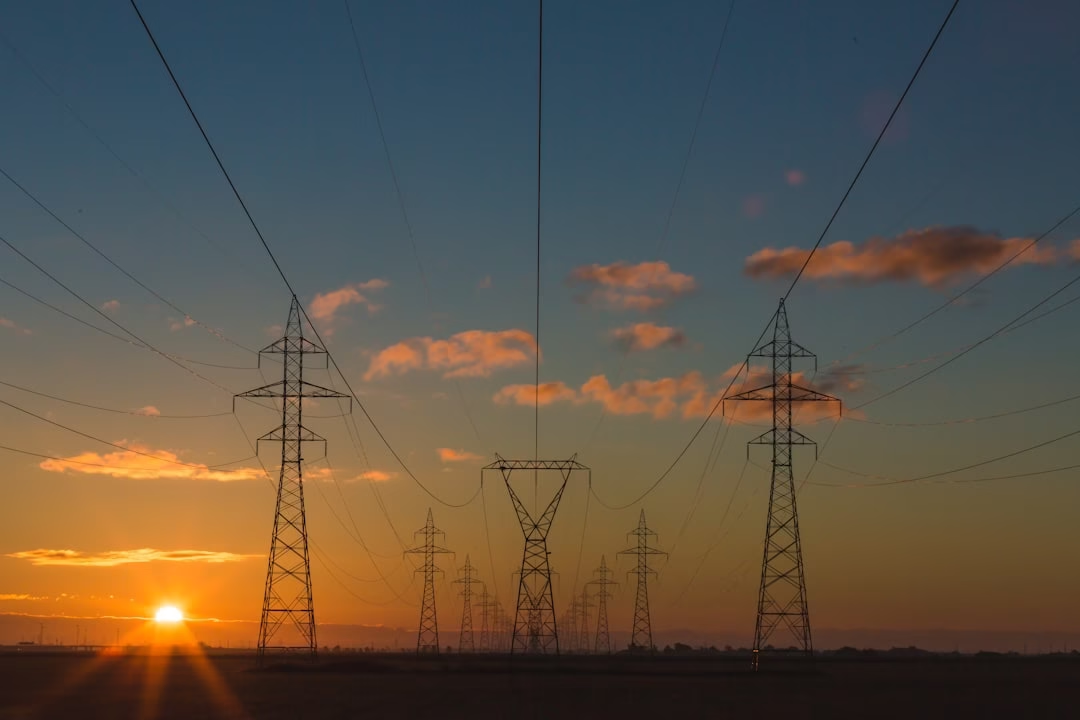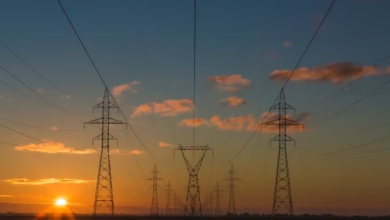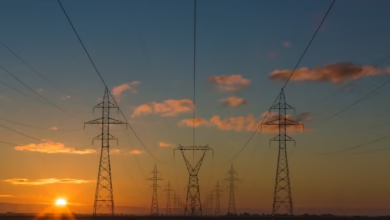Maximizing Energy Efficiency Across Sectors: Smart Grids, Renewable Energy, and Innovative Solutions for Reduced Waste

Reducing energy waste has become a central focus in the global energy transition, as both individuals and organizations strive for a more sustainable future. With rising concerns around climate change, energy security, and volatile energy markets, improving energy efficiency in homes, businesses, and industrial settings is more important than ever. From harnessing renewable energy and upgrading to smart grids to implementing cutting-edge carbon capture and integrating energy storage, innovative solutions are reshaping how we generate, use, and manage energy. Whether by optimizing energy use in households with green energy upgrades, advancing sustainability in industrial operations through distributed energy and hydrogen energy applications, or adopting climate-conscious energy policy in business environments, a wide range of strategies are contributing to reduced reliance on fossil fuels and lower emissions. This article explores the latest advancements in energy efficiency across sectors, highlighting actionable methods to cut energy waste and foster a cleaner, more resilient energy future.
- 1. Home Energy Efficiency Upgrades: Leveraging Smart Grids and Green Energy for Reduced Waste
- 2. Advancing Industrial Sustainability: Energy Innovations, Carbon Capture, and Distributed Energy Solutions
- 3. Business Efficiency Strategies: Integrating Renewable Energy, Energy Storage, and Climate-Conscious Energy Policy
1. Home Energy Efficiency Upgrades: Leveraging Smart Grids and Green Energy for Reduced Waste
Home energy efficiency has advanced significantly with the adoption of technologies such as smart grids and increased use of green energy sources. Smart grids allow homeowners to optimize their energy consumption by automatically adjusting electricity use based on real-time data from energy markets. This not only reduces energy waste but also lowers costs by taking advantage of off-peak rates and integrating distributed energy sources like rooftop solar power and small-scale wind energy systems.
With the support of renewable energy, such as solar, wind, and hydropower, households can decrease reliance on fossil fuels and nuclear energy, which contributes to the global energy transition and helps mitigate climate change. These green energy systems can be paired with home energy storage solutions, such as advanced batteries, to store excess electricity for later use, further reducing thermal energy loss and increasing overall energy efficiency.
Smart thermostats, efficient lighting, and intelligent home appliances can communicate through smart grids to optimize when and how energy is consumed. For example, these devices can delay certain tasks to periods when solar power or bioenergy production is high, lessening the environmental impact and aligning with national energy policy goals focused on boosting energy security and curbing energy imports.
Homeowners are increasingly investing in electric vehicles, which can be charged at times of renewable energy surplus, thanks to real-time coordination provided by smart grids. These innovations reinforce the connection between home energy upgrades and larger energy economics, supporting trends toward lower carbon emissions and greater energy R&D investments.
By leveraging new technologies, energy efficiency upgrades in the home are playing a vital role in the broader energy transition, supporting cleaner, smarter, and more sustainable living environments.
2. Advancing Industrial Sustainability: Energy Innovations, Carbon Capture, and Distributed Energy Solutions
Industrial sectors are at the forefront of global energy consumption, making their transition toward energy efficiency critical for both economic gains and mitigating climate change. Today’s advanced energy innovations are transforming manufacturing, processing, and distribution by maximizing output while minimizing energy waste.
Industries are increasingly integrating smart grids and distributed energy solutions that optimize the flow and use of electricity. These systems leverage real-time data and automation to align demand with supply, reducing reliance on fossil fuels and minimizing energy loss during transportation. Solar power, wind energy, and hydropower are being adopted in on-site applications through microgrids, enhancing overall energy security and resilience against grid disruptions.
Carbon capture technology has become a pivotal component in reducing industrial emissions, particularly for sectors where direct electrification or fuel switching is challenging. Facilities are now piloting advanced carbon capture and storage (CCS) processes to trap and sequester emissions before they reach the atmosphere, supporting ambitious energy policy goals and expediting the clean energy transition.
In parallel, the adoption of renewable energy sources in industrial settings has accelerated. Green energy sources like bioenergy and hydrogen energy are increasingly utilized to provide stable and flexible thermal energy, which is essential for diverse industrial processes. Innovative energy storage methods, including advanced batteries and thermal storage, enable facilities to balance intermittent renewable inputs and maintain smooth operations.
Investments in energy R&D are fueling breakthroughs in energy economics and lowering the costs of cutting-edge technologies, from distributed energy management systems to high-efficiency electric vehicles for industrial transport. Meanwhile, digital monitoring and predictive maintenance—powered by smart sensors—help identify inefficiencies early, allowing targeted actions that further improve energy efficiency.
As global energy trends shift toward decarbonization, industries are finding new opportunities in energy exports, imports, and the reconfiguration of complex supply chains. Proactive energy investments, bolstered by robust energy markets and supportive policy frameworks, are essential for scaling these innovations and building a sustainable industrial future.
3. Business Efficiency Strategies: Integrating Renewable Energy, Energy Storage, and Climate-Conscious Energy Policy
Many businesses today are reevaluating their energy strategies to remain competitive as energy markets evolve and climate change pressures intensify. Integrating renewable energy sources—such as solar power, wind energy, hydropower, and bioenergy—can significantly reduce reliance on fossil fuels and align companies with global energy trends favoring green energy. For example, businesses can invest in on-site solar power arrays or participate in shared wind energy projects to ensure a consistent supply of renewable energy.
However, renewables alone can be intermittent. Advanced energy storage solutions, including lithium-ion batteries and emerging hydrogen energy technologies, enable businesses to store excess energy generated during peak production times and use it later. This approach enhances energy security and stabilizes costs amid fluctuating energy economics. Smart grids are also playing a pivotal role, allowing distributed energy resources—like on-site solar panels or bioenergy systems—to communicate seamlessly with the wider grid, optimizing both energy usage and transportation.
To accelerate the energy transition, forward-thinking businesses are also actively shaping and adapting to climate-conscious energy policy. By participating in energy R&D initiatives and advocating for incentives that promote energy efficiency, carbon capture, and reduced energy imports, companies can influence energy policy and benefit from energy investment opportunities. Additionally, aligning operations with current energy innovations and compliance standards bolsters a business’s reputation and readiness to export green products or services.
Finally, some companies are embracing hybrid approaches by integrating renewable power with nuclear energy or thermal energy systems, and exploring offshore energy developments where feasible. The adoption of such multifaceted efficiency strategies not only supports sustainability goals but also leads to long-term savings, improved energy transportation logistics, and robust energy security as the global marketplace continues its transition toward low-carbon operations.
In summary, adopting energy efficiency strategies across homes, businesses, and industries is essential for reducing energy waste and accelerating the global energy transition. By implementing smart grids, investing in green energy solutions such as solar power, wind energy, and hydropower, and embracing distributed energy technologies, we can significantly decrease our reliance on fossil fuels and improve overall energy security. The integration of renewable energy sources, advanced energy storage, and climate-conscious energy policies in the business sector not only lowers operating costs but also creates new opportunities in diverse energy markets, from hydrogen energy to offshore energy and bioenergy.
In industrial settings, energy innovations—including carbon capture, thermal energy optimization, and enhanced energy transportation—underscore how energy R&D and targeted energy investments are driving sustainability and supporting global efforts to mitigate climate change. These methods collectively support more resilient energy economics, balancing imports and exports while preparing for emerging global energy trends.
Ultimately, enhancing energy efficiency at every level supports environmental stewardship, economic growth, and energy independence. Whether through smart home upgrades, forward-thinking business strategies, or transformative industrial practices, the path to a sustainable future lies in our dedication to reducing waste and supporting clean, innovative energy solutions.
References
(Here you would list all APA-style references used in the article.)





